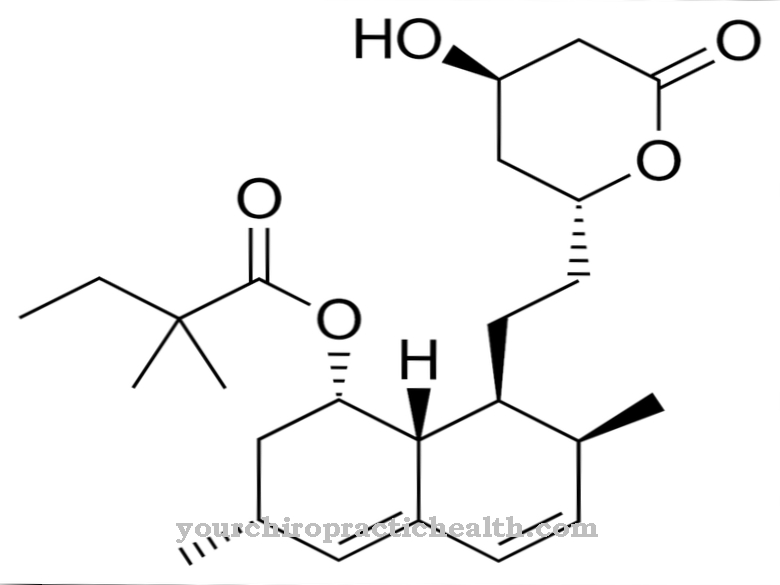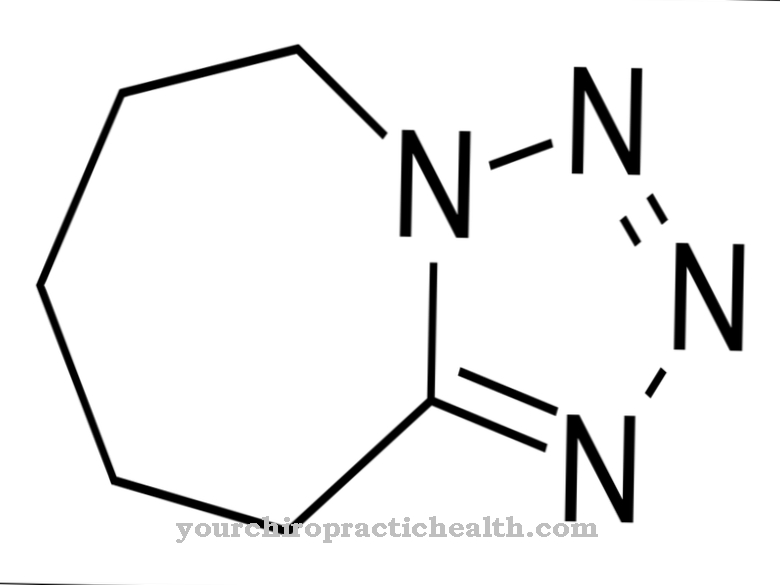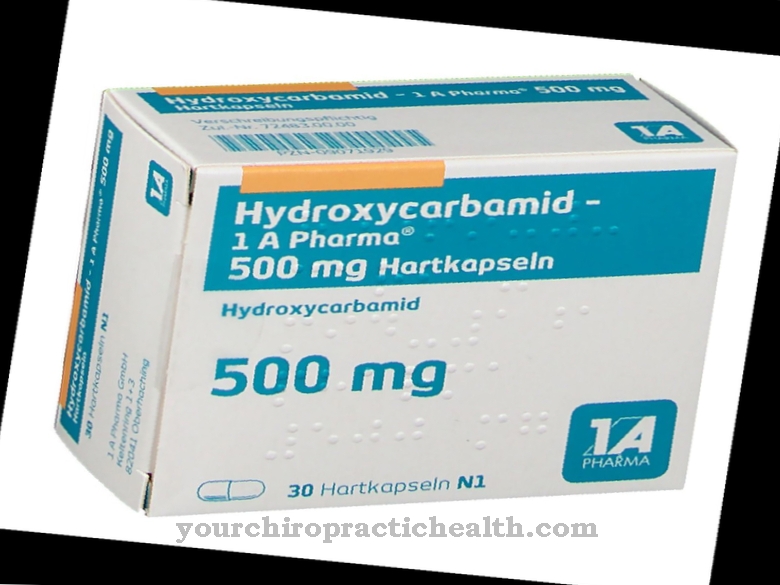As Posaconazole is called an antifungal agent. It belongs to the group of triazoles.
What is posaconazole?

The antifungal agent posaconazole is used to treat specific fungal infections that prove to be resistant to other drugs. In medicine, the active ingredient is also used Posaconazolum called.
Posaconazole has been approved in Germany under the trade name Noxafil® since the end of 2005 and was brought onto the market by Essex Pharma.
The drug is usually used against fungi that are resistant to common antimycotics such as itraconazole or amphotericin B. The preparation is subject to prescription.
Pharmacological effect
Posaconazole belongs to the group of active substances of the triazoles and imidazoles. The drug, like itraconazole and voriconazole, is a synthetic triazole antifungal agent. Its positive properties include its broad spectrum of activity, which can also be used for prophylaxis, as well as its good tolerance.
Fungi are equipped with a cell wall that is made up of multiple sugars and the insect shell building material chitin. The cell membrane of the fungi extends inside the cell and forms part of the cell wall. It contains the important substance ergosterol. This structure is a major difference between the fungal cell membrane and the human cell membrane. There is cholesterol in that.
Ergosterol, which is extremely important for the cell membrane of fungi, is made step by step from the substance squalene. At this point posaconazole takes effect. The antifungal substance has the ability to inhibit the third conversion step of squalene by blocking an enzyme necessary for this. Instead of the required ergosterol, the wrong building materials are created. In the further course the wrong building materials cause a disturbance of the metabolic processes within the cell membrane, which are important for the multiplication of the fungi. Posaconazole does not kill the fungi, but they can no longer multiply undisturbed.
Medical application & use
Posaconazole is used to treat various types of fungal infections. However, the antifungal agent is usually not one of the first choice. Posaconazole is only used when other treatment measures are unsuccessful.
Posaconazole's indications include Aspergillus fungi that have penetrated the patient's body and cannot be effectively treated with itraconazole or amphotericin B. There is also the possibility that the patient cannot tolerate these active ingredients.
Other areas of application are mycetomas (soft tissue tumors), which consist of fungal tissue, as well as mold infections, which cannot be successfully treated with itraconazole. The same applies to fusariosis (hose fungus infections), the treatment of which with amphotericin B is not possible.
Posaconazole is also suitable for treating parasites such as coccidia. These are protozoa in body cells that are insensitive to antimycotics such as fluconazole, itraconazole or amphotericin B.
Posaconazole is the first choice for treating fungal infections in the mouth and throat. This is especially true for people whose immune system is compromised or who have a serious illness.
Furthermore, a prophylactic use of posaconazole is possible to protect certain groups of people from fungal infections. These are patients who suffer from blood cancer or acute myeloid leukemia and who are undergoing chemotherapy. Because there is a permanent shortage of neutrophils in the blood, there is a risk that those affected could contract aggressive fungal diseases.
The same applies to recipients of bone marrow donations. Their immune system has to be suppressed in order to counteract rejection of the donor bone marrow.
Posaconazole is usually administered orally through tablets. The patient takes 400 milligrams of the active ingredient twice a day with their food.
Risks & side effects
The use of posaconazole can in some cases result in undesirable side effects. The patients often suffer from nausea, vomiting, loss of appetite, which sometimes leads to refusal to eat, dizziness, taste disturbances, headache, abdominal pain, drowsiness, constipation, gas, anus discomfort, dry mouth, feelings of weakness, itching, rash and fever.
Disorders of the mineral balance, a deficiency in neutrophils, a deficiency in magnesium and potassium and high blood pressure are also not uncommon. Occasionally you may also experience tremors, anemia, irregular heartbeat, convulsions, hiccups, coughs, inflammation of the liver, jaundice, mouth ulcers, hair loss and confusion.
Posaconazole must not be used if the patient is hypersensitive to the drug. Consistent weighing of the risk and benefit by the doctor is also necessary if the patient is hypersensitive to other triazoles and imidazoles or if there are liver dysfunction, cardiac arrhythmia or severe diarrhea.
Animal experiments during pregnancy have shown posaconazole to have dangerous effects on the unborn child. How high the risk is in humans could not be determined. For this reason, women of childbearing potential are recommended to use contraception during posaconazole treatment. During pregnancy, the antifungal agent is only given if the doctor estimates the benefit for the patient to be higher than the risk for the baby. If the mother is breastfeeding, she must stop breastfeeding before posaconazole therapy.
There are intense interactions between posaconazole and numerous other drugs. Therefore, the antifungal agent must not be administered together with benzodiazepines such as alprazolam, midazolam and triazolam, antiepileptic agents such as carbamazepine, primidone, phenytoin and phenobarbital, anti-tuberculosis agents such as rifabutin and rifampecin or H1-anithistamines such as astemizole or terfenadine. The same applies to ergot alkaloids such as dihydroergotamine and ergotamine, cytostatics such as vinblastine and vincristine, and the stomach remedy cisapride.



























